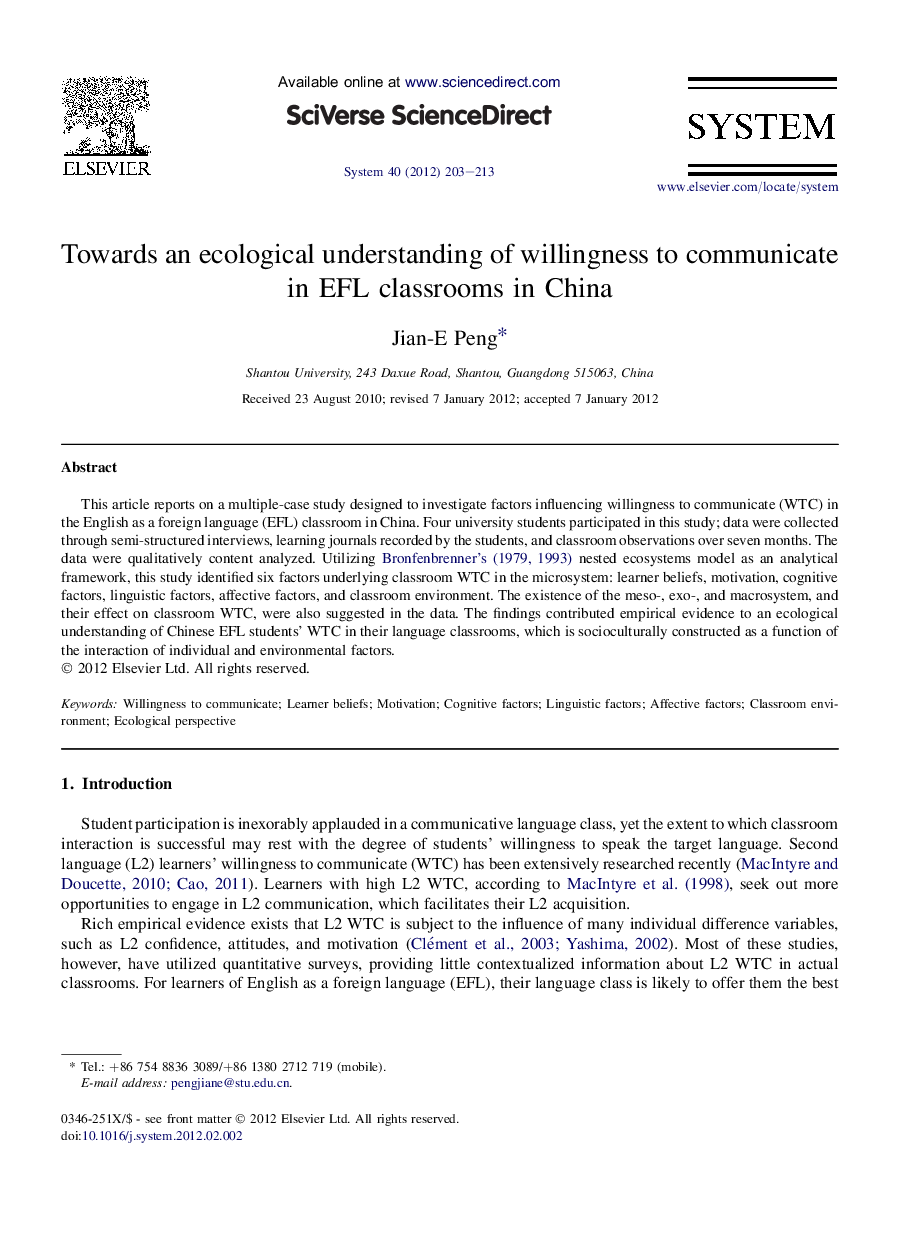| Article ID | Journal | Published Year | Pages | File Type |
|---|---|---|---|---|
| 373517 | System | 2012 | 11 Pages |
This article reports on a multiple-case study designed to investigate factors influencing willingness to communicate (WTC) in the English as a foreign language (EFL) classroom in China. Four university students participated in this study; data were collected through semi-structured interviews, learning journals recorded by the students, and classroom observations over seven months. The data were qualitatively content analyzed. Utilizing Bronfenbrenner, 1979 and Bronfenbrenner, 1993 nested ecosystems model as an analytical framework, this study identified six factors underlying classroom WTC in the microsystem: learner beliefs, motivation, cognitive factors, linguistic factors, affective factors, and classroom environment. The existence of the meso-, exo-, and macrosystem, and their effect on classroom WTC, were also suggested in the data. The findings contributed empirical evidence to an ecological understanding of Chinese EFL students’ WTC in their language classrooms, which is socioculturally constructed as a function of the interaction of individual and environmental factors.
